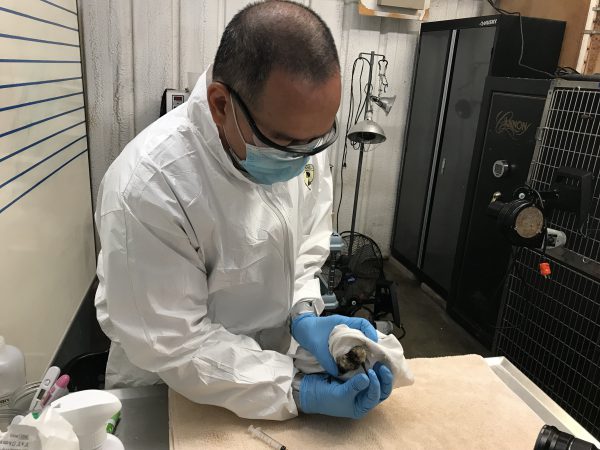
By Breeana Greenberg, Special to the Independent
The race is underway to capture and rehabilitate wildlife affected by the oil spill off of the coast of Huntington Beach.
At a press conference Monday morning, the state’s Dept. of Fish and Wildlife and the Oiled Wildlife Care Network announced that four oiled birds have been collected.
“California is the model for the world as far as oil wildlife preparedness and response,” said Michael Ziccardi, director of the Oiled Wildlife Care Network at the UC Davis School of Veterinary Medicine. “We have the best techniques, and the best success of any place in the world.”
The Oiled Wildlife Care network is made up of 44 different organizations throughout California which work together to care for animals in crisis in response to an oil spill. The network has over 1600 trained responders ready to go when a spill is reported. The network has responded to more than 75 oil spills in California since 1994.
“We’re currently actively searching from north of Bolsa Chica, down to Laguna, and farther south, on water and on land, and have reconnaissance teams farther north and farther south to look for animals that might be flighted and oiled, but not in the general oil spill area,” Ziccardi said.
Of the four captured oiled birds, one was euthanized due to chronic injuries. The other three birds are expected to recover.
“We have more than a 50 to 75% success rate to return animals back into their environment,” Ziccardi said of nationwide operations.
The number of oiled and injured animals reported appears to be low, Ziccardi said. However, the Oiled Wildlife Care Network will be doing overflights to continue searching for impacted wildlife.
Oiled birds are at risk for hypothermia. Because birds generally have a low body temperature, their feathers keep them dry and insulated. When their feathers are coated in oil, it exposes them to the cool water temperatures. Oiled birds will likely be coming ashore to dry and warm themselves which allows trained responders to collect these oiled birds.
The process of rehabilitating oiled birds is 10 to 14 days on average.
The Oiled Wildlife Care Network is not currently taking new volunteers.
“We have been asked many, many times, ‘what can the public do? What can people do if they want to help?’” Ziccardi said. “First and foremost, we need people to not try to catch oil animals. It’s not safe for the animals, it’s not safe for them. We ask that they report those sightings immediately.”
Teams are prepared to respond to hotline calls for sightings of oiled wildlife. To report oiled wildlife, call 1-877-UCD-OWCN (877-823-6926).





Save more birds and animals..many more, but stopping the dangerous archaic aging offshore drilling business! Moratorium now! Come on CITIES!!! Draft moratoriums now!!!